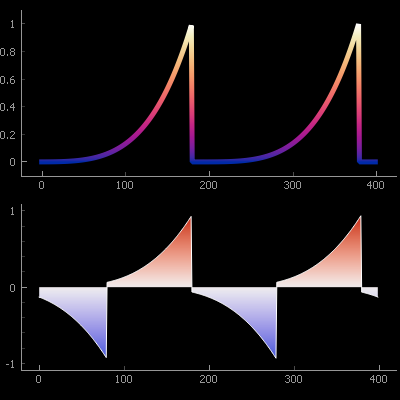How can I contribute to PyQtGraph? It’s a question many developers ask when looking to support this powerful visualization library.
Whether you’re a seasoned coder or just getting started, PyQtGraph welcomes contributions of all kinds from fixing bugs to improving docs or helping others in the community.
Understanding the PyQtGraph Project
Before contributing, it’s important to understand what PyQtGraph is. PyQtGraph is a pure-python graphics and GUI library built on PyQt and NumPy, designed for fast, interactive visualization and scientific plotting.
- Open-source and community-driven
- Supports high-performance real-time plotting
- Integrates with PyQt5, PySide2, and Qt frameworks
- Actively maintained and used in research, education, and engineering
Your contributions help keep this critical tool alive and evolving.
Why Contribute to PyQtGraph?
There are many reasons to contribute:
- Sharpen Your Skills: Improve your coding, documentation, and collaboration abilities.
- Build Your Resume: Show your contributions on GitHub.
- Support the Community: Help others benefit from open-source software.
- Join a Network: Work alongside other skilled developers and scientists.
Contributing also allows you to stay engaged with Python, Qt, and scientific computing tools.
Ways to Contribute to PyQtGraph
You don’t have to be a coding expert to contribute. Here are the main ways you can get involved:
Code Contributions
- Fix bugs
- Add features
- Refactor existing code
Documentation Improvements
- Fix typos or unclear explanations
- Add new examples
- Translate content
Testing & Bug Reporting
- Test new features
- Report reproducible bugs
- Suggest improvements
Answering Questions
- Help users on GitHub Issues, Stack Overflow, or Discord.
Creating Tutorials & Examples
- Write blogs or create videos using PyQtGraph.
Donations or Sponsorship
- Fund the project or raise awareness.
Getting Started with Code Contributions
If you’re looking to contribute code, follow these steps:
i).Fork the Repository
Head to https://github.com/pyqtgraph/pyqtgraph and fork it to your GitHub account.
ii).Clone Locally
bashgit clone https://github.com/your-username/pyqtgraph.git
cd pyqtgraph
iii).Install Requirements
PyQtGraph uses Python with minimal dependencies:
bashpip install -r requirements-dev.txt
iv).Create a New Branch
bashgit checkout -b fix-legend-bug
v).Make Changes
Use an IDE like PyCharm or VSCode. Test your changes using examples provided in /examples.
vi).Run Tests
bashpytest
vii).Submit a Pull Request
Push your branch and open a pull request on GitHub. Add a meaningful description and link to any related issues.
Understanding the Codebase Structure
Familiarize yourself with PyQtGraph’s key folders:
- /pyqtgraph/ – Core modules and plotting logic
- /examples/ – Usage examples
- /tests/ – Unit and regression tests
- /docs/ – Documentation and markdown files
Tip: Start with smaller files like PlotWidget.py or functions.py if you’re a beginner.
Contributing to Documentation
Clear, complete documentation is as valuable as clean code.
Ways to Help:
- Fix typos or outdated information in .md or .rst files.
- Add usage examples to the examples folder.
- Improve API documentation using Python docstrings.
- Translate docs to other languages if needed.
You can edit the markdown files directly or use tools like Sphinx to generate updated docs.
Reporting Bugs and Requesting Features
If you encounter a bug, open a detailed issue at:
👉 https://github.com/pyqtgraph/pyqtgraph/issues
Guidelines for Reporting:
- Provide your OS and Python version
- Include a minimal reproducible example
- Use clear, concise language
- Include screenshots if helpful
For feature requests, explain the need clearly and suggest a possible implementation if you have one.
Community Support and Discussion
You can contribute just by being part of the conversation.
Where to Help:
- GitHub Discussions
- Stack Overflow (Tag: pyqtgraph)
- Discord / Gitter (if available)
By answering questions and offering solutions, you support new users and lighten the load for maintainers.
Creating Tutorials and Content
If you’re more of a creator than a coder, contribute through content.
Ideas for Tutorials:
- How to install PyQtGraph
- Building a real-time sensor dashboard
- Custom GUI layouts using PlotWidget and QGridLayout
- Exporting PyQtGraph plots to images
You can share these via Medium, YouTube, Dev. To, or on your blog and link them in the community.
Becoming a Long-Term Contributor
Want to contribute regularly? Here’s how:
- Pick a module and “own” it by fixing related issues
- Join release testing when a new version is close
- Review and comment on other people’s PRs
- Follow the GitHub repo to get notifications
Eventually, you could become a trusted maintainer or get invited to the core team.
Best Practices for Open Source Contribution
To contribute effectively and professionally:
- Follow PyQtGraph’s contribution guidelines and code style
- Write descriptive commit messages
- Stay respectful in discussions and reviews
- Ask questions — collaboration is key
- Test your changes thoroughly
Reading the CONTRIBUTING.md and README.md files is always a great starting point.
Conclusion
How can I contribute to PyQtGraph? Whether through code, documentation, testing, or simply answering questions there’s a place for everyone in the PyQtGraph community. Your contributions not only help evolve an important scientific tool but also connect you to a vibrant ecosystem of developers and researchers.
Start small, stay consistent, and your impact will grow. PyQtGraph thrives because of people like you.


